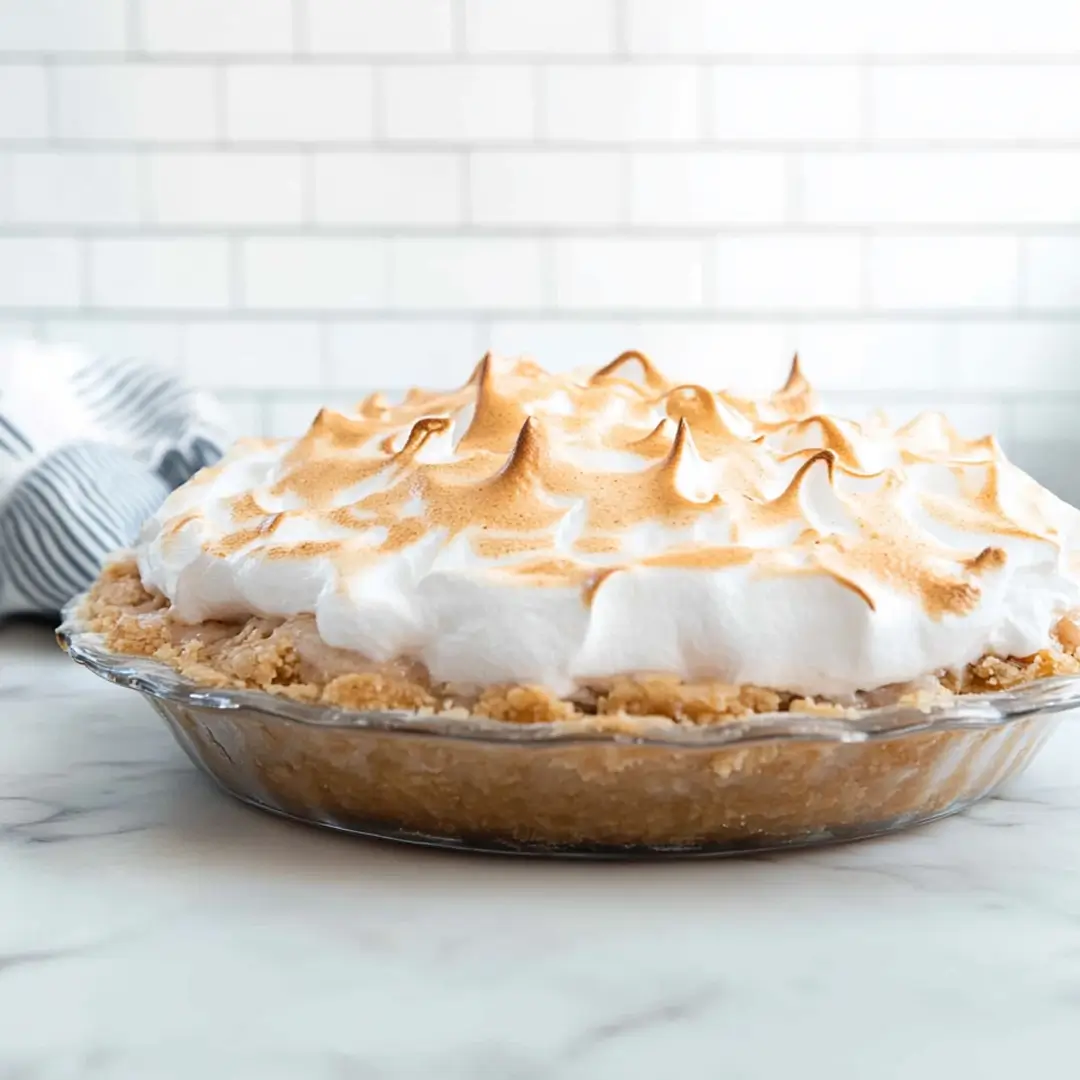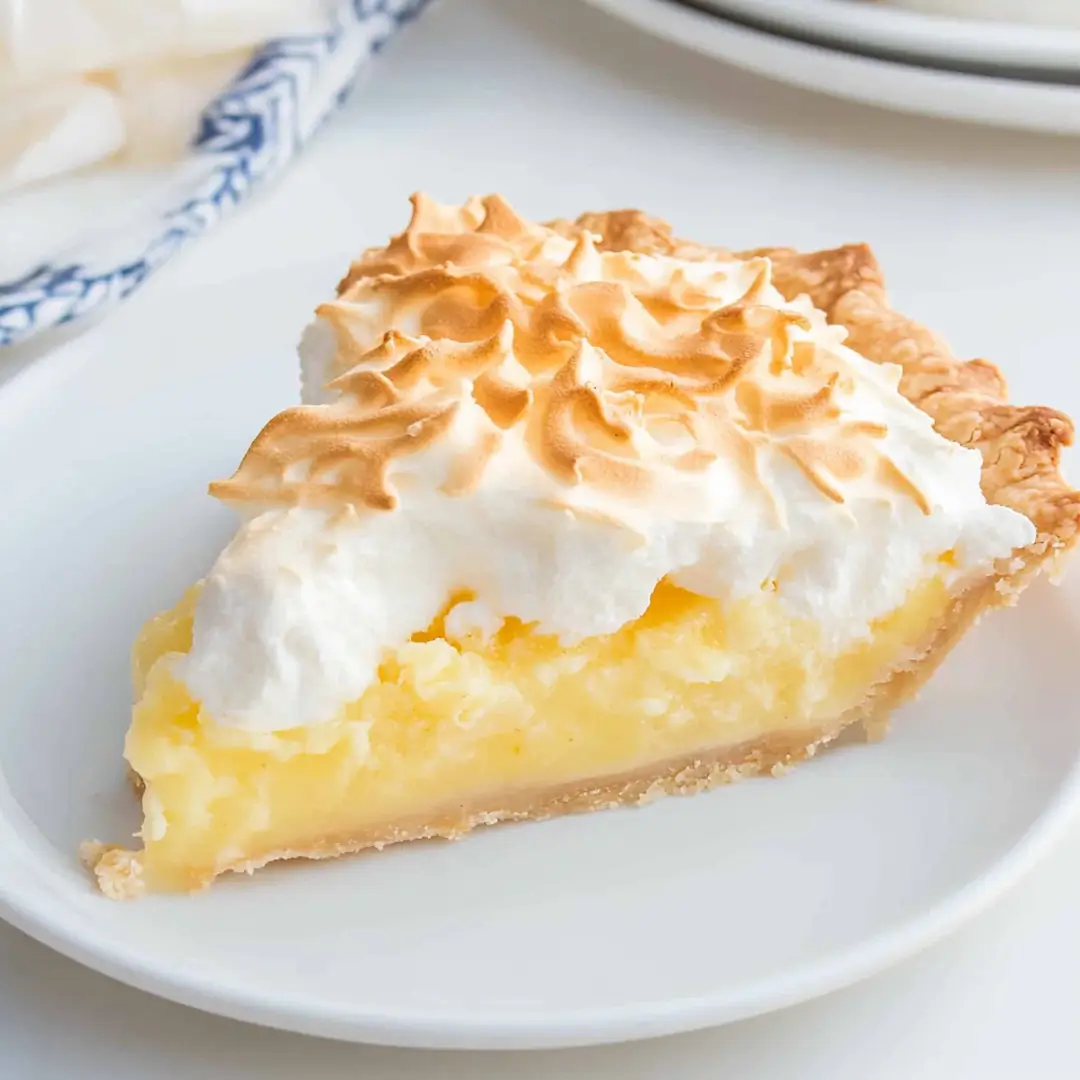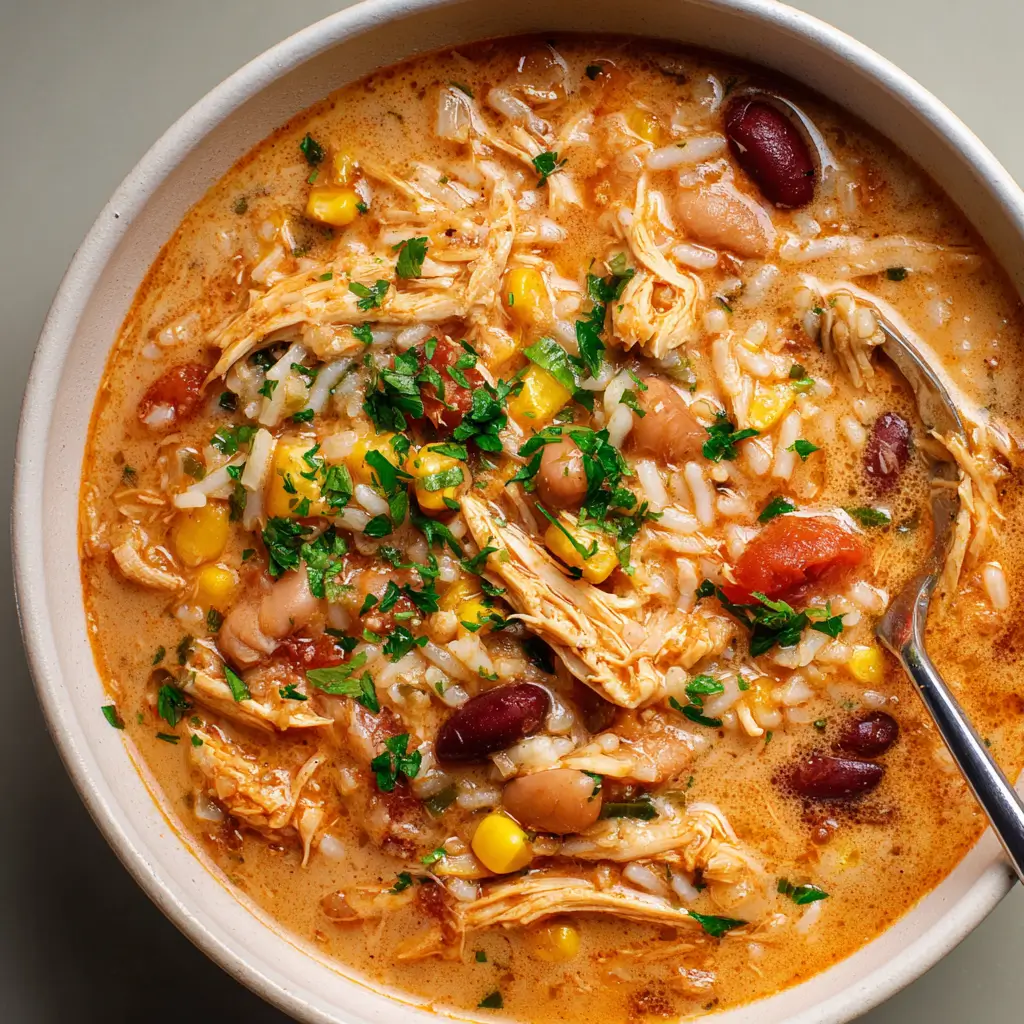Coconut meringue pie is a classic dessert made with a creamy coconut custard base and a light, fluffy meringue topping. It’s baked until the meringue is golden brown and slightly crisp on the outside, creating a balanced contrast to the smooth, sweet filling below. The pie sits in a buttery, pre-baked crust that supports the textures and flavors without overpowering them. It’s simple, nostalgic, and ideal for gatherings or a laid-back weekend dessert.
What I like most about coconut meringue pie is the balance. The filling is rich but not too heavy, and the meringue adds a lightness that keeps each bite from feeling overly sweet. I also appreciate how cleanly it slices once chilled no mess, no collapsing layers. The toasted meringue adds a subtle crunch that makes the texture more interesting than many cream-based pies.
After trying a few versions and refining the steps, this has become one of my go-to desserts when I want something that feels special but doesn’t require complicated techniques. If you enjoy classic desserts with just a hint of tropical flavor, this one’s worth making from scratch.
Part 2: Key Ingredients
Getting the ingredients right is the first step toward a flawless coconut meringue pie. While the recipe isn’t complicated, each component plays a critical role. Understanding the “why” behind these ingredients makes all the difference especially when you’re aiming for that perfect balance of texture and flavor.
Core Ingredients
-
Shredded Coconut: This is the star of the show. I recommend using sweetened shredded coconut for a richer flavor and softer bite, but unsweetened works too if you want more control over the sweetness. Toasting a small portion also adds an extra layer of flavor and texture to the top.
-
Eggs: You’ll need both yolks and whites. The yolks enrich the custard filling, while the whites get whipped into that dreamy meringue topping. Be sure to separate them cleanly any yolk in the whites can ruin your meringue.
-
Milk: Whole milk or canned coconut milk will create a creamy custard. Coconut milk deepens the tropical notes and makes the filling extra silky.
-
Cornstarch: This thickens the filling and ensures it holds up when sliced. Without it, your pie may be too runny.
-
Sugar: Granulated sugar is used in both the filling and the meringue. It sweetens and stabilizes the egg whites during whipping.
-
Pie Crust: A blind-baked, flaky crust is essential. You can go homemade or use a high-quality store-bought crust, but it must be fully baked before adding the filling.
Optional Additions
-
Vanilla or Almond Extract: A splash adds warmth and depth to the custard.
-
Citrus Zest: Lemon or lime zest balances the sweetness with a bit of brightness.
-
Butter: Stirring a tablespoon into the hot filling at the end adds gloss and richness.
-
Toasted Coconut for Garnish: Sprinkling toasted coconut over the meringue just before serving gives you a wonderful crunch and visual contrast.
How to Make Coconut Meringue Pie
This pie comes together in four manageable steps: crust, custard, meringue, and final bake. Each step builds on the last, and timing matters. Let’s walk through it.

Step 1: Prepare the Pie Crust
Start by blind baking your pie crust. This keeps it crisp and prevents soggy bottoms. Line the crust with parchment paper and fill it with pie weights or dried beans, then bake at 375°F for 15–20 minutes. Remove the weights and bake another 5–8 minutes until golden.
Why blind bake? Because the custard isn’t baked long enough to fully cook a raw crust. This pre-bake ensures it stays firm under that luscious filling.
Step 2: Make the Coconut Filling
In a saucepan, whisk together sugar, cornstarch, and salt. Slowly add your milk, stirring constantly to avoid lumps. Bring it to a gentle simmer until it thickens this usually takes 5–7 minutes.
Next, temper your egg yolks. Whisk a bit of the hot mixture into the yolks to gently raise their temperature before adding them back to the pot. This step prevents scrambling. Once combined, cook for another 2 minutes, then stir in your shredded coconut and optional butter or extract. Pour the hot filling into the crust.
Step 3: Whip the Meringue
Start with room-temperature egg whites in a clean bowl. Whip until soft peaks form, then slowly add sugar and a pinch of cream of tartar. Keep whipping until you get stiff, glossy peaks. You’re looking for a thick meringue that holds its shape.
Spread the meringue over the hot filling right away. Be sure to press it all the way to the crust’s edge to seal it in and prevent shrinking during baking.
Step 4: Bake and Cool
Bake the assembled pie at 350°F for 15–20 minutes, or until the meringue is golden. Let it cool at room temperature for at least an hour before chilling. This step helps set the layers and prevents moisture buildup under the meringue.
Variations of Coconut Meringue Pie
One of the best things about coconut meringue pie is its flexibility. Once you’ve got the classic version down, it becomes the perfect canvas for adding personal touches or flavor twists. Whether you’re catering to dietary needs or just love experimenting, these variations offer something a little extra.
Tropical Coconut Meringue Pie
Add crushed pineapple or mango purée to the custard for a sunny, tropical flair. The fruit pairs beautifully with the coconut and adds a light sweetness without overpowering the filling. Just be sure to drain the fruit well or reduce the purée to avoid thinning the custard.
Chocolate Coconut Meringue Pie
Line the pre-baked crust with a thin layer of melted dark chocolate before pouring in the custard. It hardens as it cools, adding a surprise crunch and a rich contrast to the coconut flavor. It’s also a great option if you’re serving this to chocolate lovers who need a little more indulgence.
Dairy-Free Version
Replace the milk with canned coconut milk and skip the butter. This version has an even deeper coconut flavor and a silky texture that’s just as satisfying. Make sure your crust is also dairy-free if you’re going all-in on this variation.
Mini Coconut Meringue Pies
Bake the crusts in muffin tins for individual servings. These are ideal for parties or when you want a cleaner presentation. Keep the baking time slightly shorter since they’ll set faster.
Toasted Coconut Topping
For even more texture, sprinkle toasted shredded coconut over the meringue once it comes out of the oven. It adds a lovely visual detail and enhances the nutty aroma of the pie.
For more delicious pie ideas, check out our lemon blueberry pie recipe, which combines fruity brightness with a soft, comforting base perfect if you love fruit-forward desserts.
How to Serve Coconut Meringue Pie
Serving coconut meringue pie the right way can elevate the entire dessert experience. From how you slice it to what you pair it with, these little details matter more than most people realize. After all, presentation isn’t just about looks it’s about flavor, texture, and timing coming together at the perfect moment.
Serve It Fully Chilled for Best Texture
After baking, let the pie cool completely at room temperature before placing it in the refrigerator. Once it’s fully chilled usually after about 3 hours it’s ready to serve. This wait can be hard, but it’s crucial. A warm pie might taste good, but it won’t slice cleanly. The custard needs time to firm up, and the meringue holds better when cool.
When you’re ready to serve, use a sharp knife dipped in warm water to make clean, precise cuts. Wipe the knife between slices to keep the layers intact and the meringue looking its best.
Pair It Simply Let the Pie Shine
Coconut meringue pie has enough flavor on its own, so keep the pairings simple. A cup of herbal tea, a splash of black coffee, or even a glass of milk works beautifully. If you’re serving it at a gathering, fresh berries or a small citrus salad make a refreshing contrast.
This pie also fits well at brunch, Easter spreads, or family gatherings. It’s light enough to finish a heavy meal and eye-catching enough to take center stage on a dessert table.
Common Mistakes & Fixes
Even experienced bakers sometimes struggle with coconut meringue pie. It’s a pie that demands precision in a few key areas especially when it comes to the custard and that delicate meringue topping. Here are some of the most common issues people face and how to avoid them.
Mistake 1: Meringue Separates from the Filling
This happens when the meringue is spread onto a cool or lukewarm filling. The solution? Always spread your meringue while the filling is still hot. This helps it “seal” to the custard and prevents moisture from creeping in between the layers.
Mistake 2: Weeping or Runny Meringue
If your meringue develops beads of liquid or becomes soggy, it’s likely due to underbaking or over-whipping the egg whites. Bake long enough to fully set the meringue watch for golden peaks. Also, whip your whites until just stiff. Over-whipping breaks down the structure and causes collapse.
Mistake 3: Filling Doesn’t Set Properly
A runny filling usually means the custard wasn’t cooked long enough or the thickening agent (like cornstarch) was underused. Cook until it’s visibly thick and bubbly before adding the egg yolks. Don’t cut corners here custard firms up more as it cools, but it must be sturdy to start with.
Mistake 4: Crust Gets Soggy
Skipping the blind bake is a common misstep. Always bake the crust first and let it cool slightly before pouring in the filling. A soggy base can ruin the balance of textures in an otherwise beautiful pie.
FAQs
Over the years, I’ve had many baking conversations with friends and readers, and some questions about coconut meringue pie always pop up. If you’ve ever wondered what sets it apart or how to store it correctly, this section is for you. Let’s clear up the confusion with straightforward, experience-backed answers.
What is the difference between coconut cream pie and coconut meringue pie?
Both pies start with a creamy coconut custard filling, but the difference lies in the topping. Coconut cream pie is usually finished with whipped cream, making it richer and heavier. On the other hand, coconut meringue pie has a light, airy meringue topping that gets baked to golden perfection. It’s fluffier, slightly more elegant, and better suited for those who prefer less dairy or want a lighter finish.
Does coconut meringue pie need to be refrigerated?
Yes, absolutely. After it has cooled completely at room temperature, coconut meringue pie should be stored in the refrigerator. This keeps the custard firm and the meringue fresh. Ideally, cover it loosely with plastic wrap or a pie dome to avoid crushing the meringue.
What is the secret to meringue?
Clean equipment and patience. Any grease or egg yolk in the whites can stop your meringue from whipping properly. Also, add sugar gradually, and don’t rush the process. Whip until you get stiff, glossy peaks this ensures a stable and beautiful finish that won’t collapse or separate.
What must be avoided when making meringue?
Over-whipping is a big one. Once the egg whites go past stiff peaks, they break down and become grainy. Also, avoid adding sugar all at once this can weigh down the mixture and prevent proper aeration.
Is cream of tartar or cornstarch better for meringue?
Both can help. Cream of tartar is used during whipping to stabilize egg whites and create structure. Cornstarch is often folded in afterward or cooked into a stabilizing syrup to reduce weeping. For home baking, cream of tartar is usually enough, but using both can yield the most resilient meringue.
Print
Coconut meringue pie
- Total Time: 1 hour 10 minutes (plus chilling)
- Yield: 8 servings 1x
- Diet: Vegetarian
Description
Coconut Meringue Pie is a nostalgic dessert that combines creamy coconut custard with a golden, fluffy meringue topping, all nestled in a flaky pre-baked crust. Its perfect balance of textures from rich and silky to crisp and airy makes it a delightful treat for any occasion. The lightly toasted meringue complements the tropical notes of coconut, while a clean slice reveals beautifully distinct layers. Whether you’re serving it for brunch or dessert, this pie feels both comforting and elegant.
Ingredients
For the Pie Crust
1 9-inch pie crust, pre-baked
For the Coconut Filling
3/4 cup granulated sugar
1/4 cup cornstarch
1/4 teaspoon salt
2 1/2 cups whole milk or canned coconut milk
4 large egg yolks
1 1/2 cups sweetened shredded coconut
1 tablespoon unsalted butter (optional)
1 teaspoon vanilla or almond extract (optional)
For the Meringue
4 large egg whites
1/2 cup granulated sugar
1/4 teaspoon cream of tartar
Optional Garnish
Toasted shredded coconut
Instructions
-
Blind Bake the Crust
Preheat the oven to 375°F. Line your pie crust with parchment and fill with pie weights or dried beans. Bake for 15–20 minutes, remove the weights, then bake for an additional 5–8 minutes until golden brown. Set aside to cool slightly. -
Prepare the Coconut Filling
In a saucepan, whisk sugar, cornstarch, and salt. Slowly add milk, stirring constantly. Simmer over medium heat until thickened, about 5–7 minutes. Temper the egg yolks by whisking in some of the hot mixture, then return it all to the pan and cook 2 more minutes. Stir in shredded coconut and optional butter/extract. Pour into the baked crust while hot. -
Whip the Meringue
In a clean bowl, whip egg whites with cream of tartar until soft peaks form. Gradually add sugar and continue beating until stiff, glossy peaks form. -
Top and Bake
Spread the meringue over the hot filling, sealing the edges. Bake at 350°F for 15–20 minutes or until golden brown. -
Cool and Chill
Let the pie cool at room temperature for 1 hour, then chill for at least 3 hours before serving to ensure clean slices.
Notes
-
Always spread meringue while the filling is hot to prevent separation.
-
Use canned coconut milk for a richer, dairy-free variation.
-
Avoid over-whipping the meringue it should be stiff but not dry.
-
A thin chocolate layer on the crust adds a twist for chocolate lovers.
-
For individual portions, bake in muffin tins for mini pies.
- Prep Time: 30 minutes
- Cook Time: 40 minutes
- Category: Dessert
- Method: Baked
- Cuisine: American
Nutrition
- Serving Size: 1 slice
- Calories: 370
- Sugar: 31g
- Sodium: 180mg
- Fat: 18g
- Saturated Fat: 11g
- Unsaturated Fat: 6g
- Carbohydrates: 45g
- Fiber: 2g
- Protein: 5g
- Cholesterol: 120mg
Keywords: coconut meringue pie, coconut custard pie, easy meringue pie, tropical dessert, classic pie recipe, coconut dessert, creamy pie, meringue topping, custard pie, spring dessert.



